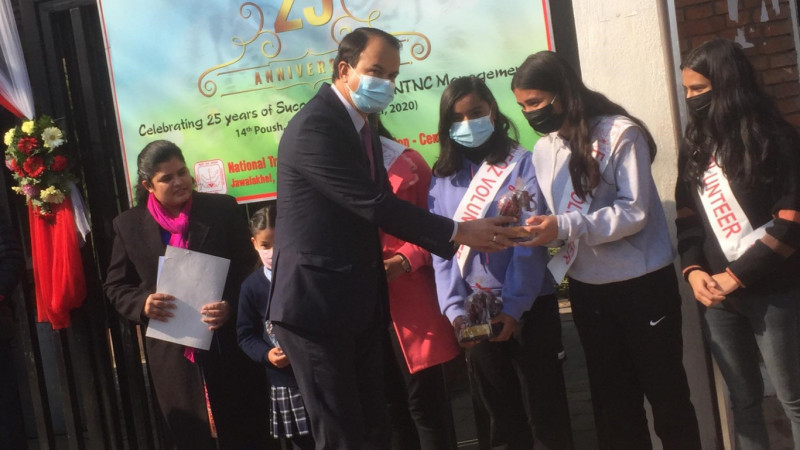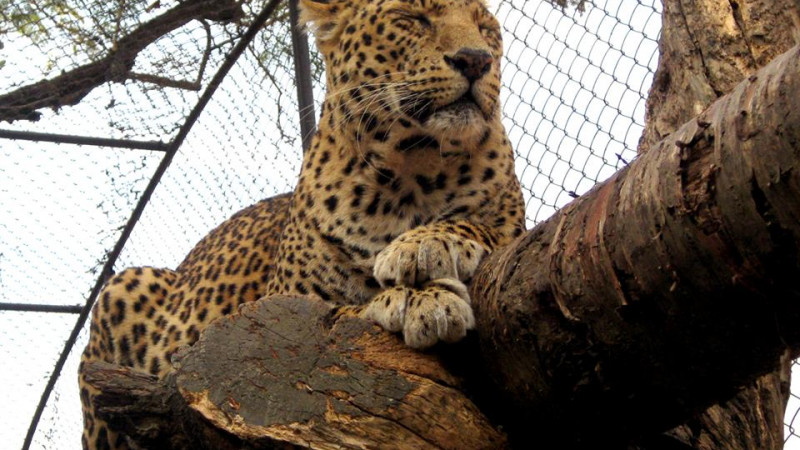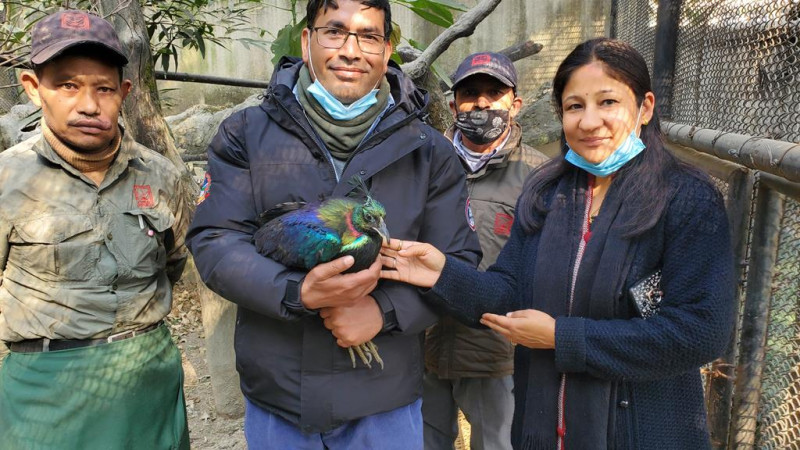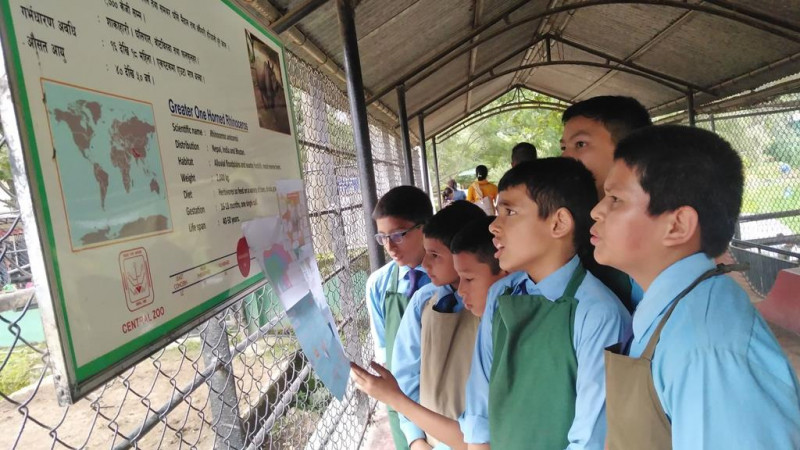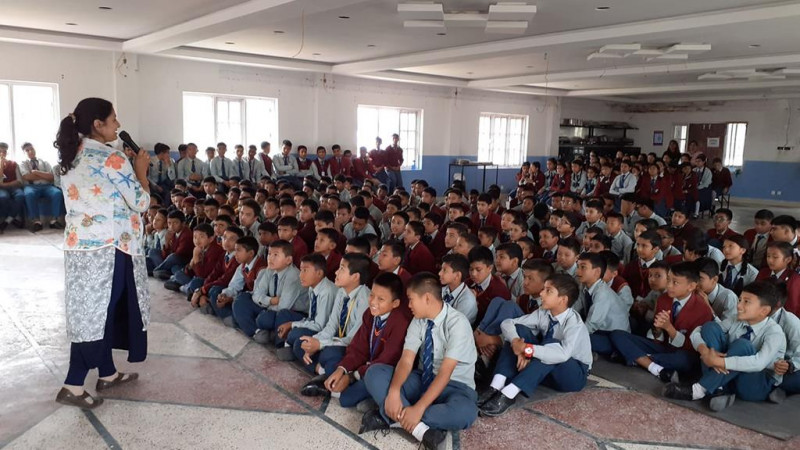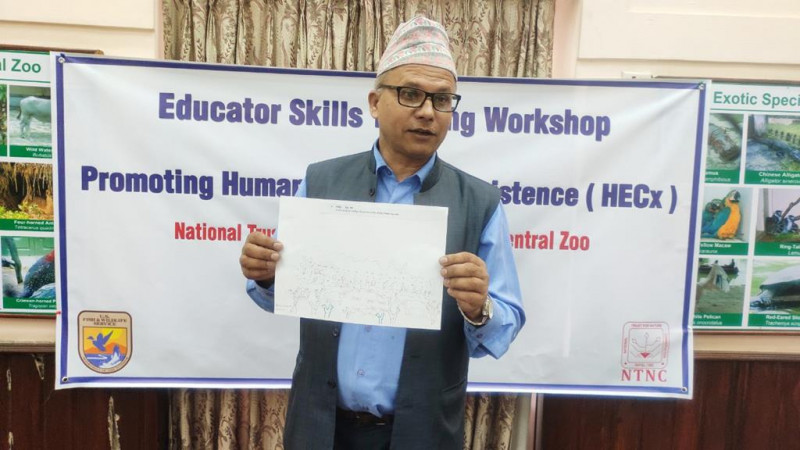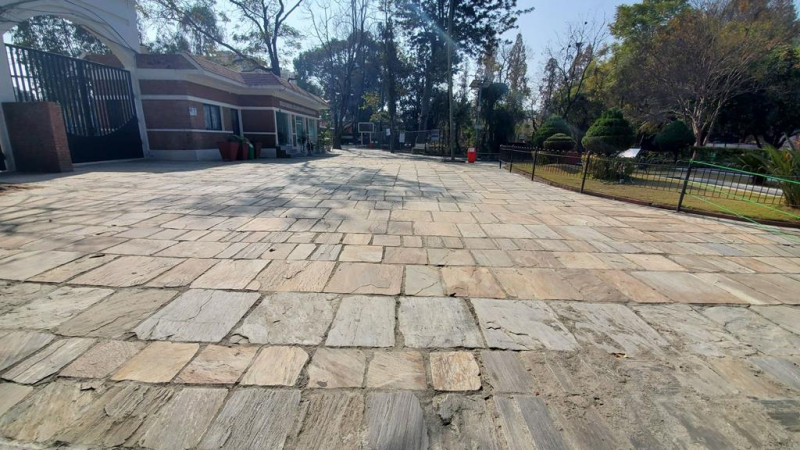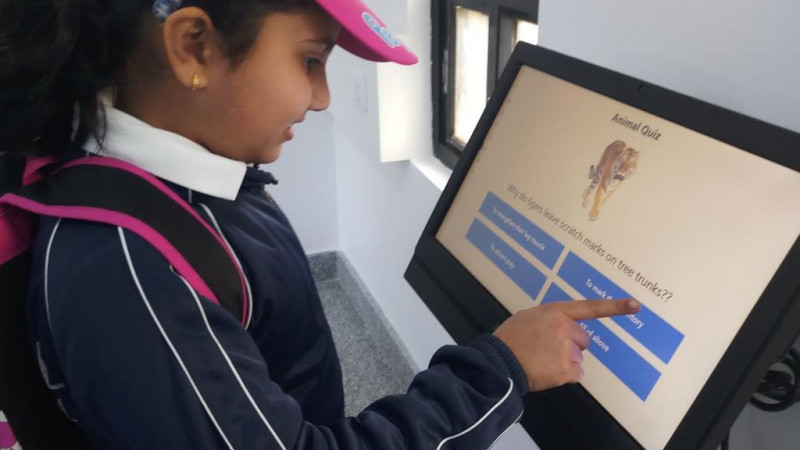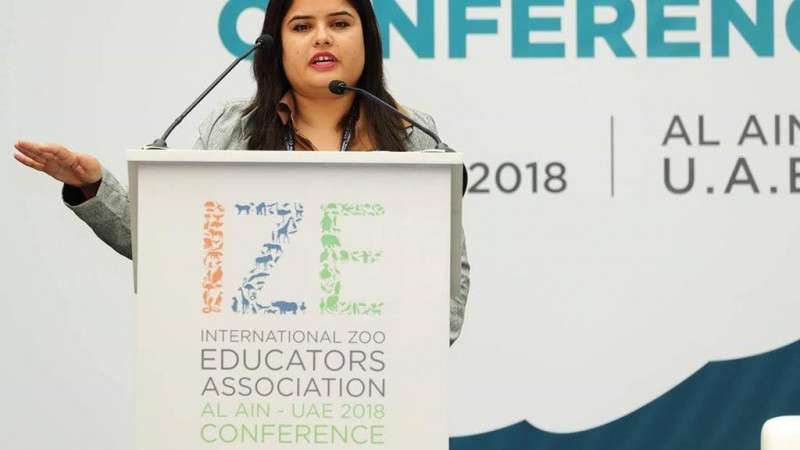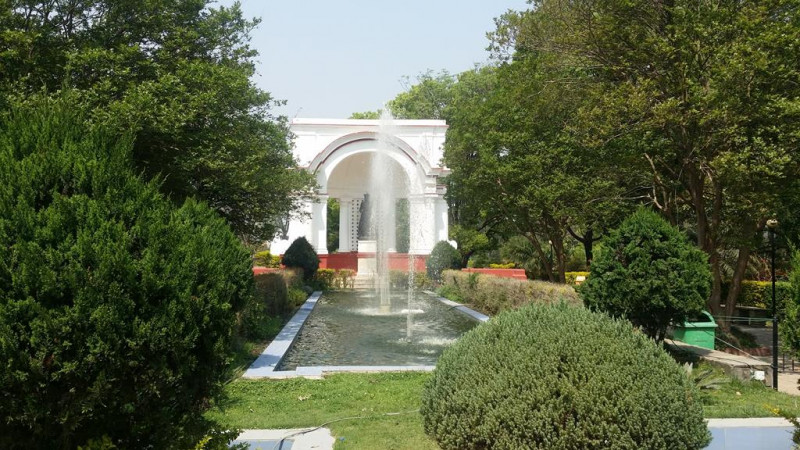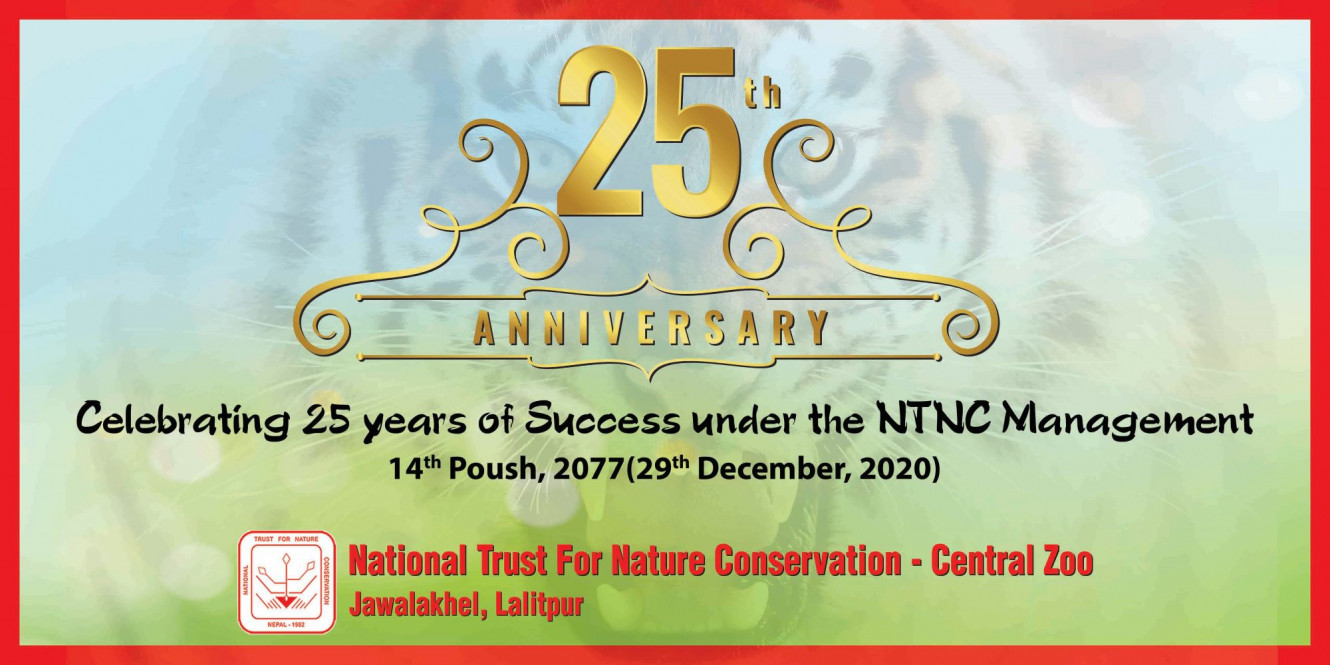
Poush 14 2077 (or December 29, 2020) marks 25 years since NTNC was first charged with the responsibility to manage the Central Zoo in Jawalakhel. As the only national-level zoo in the country to-date, the Central Zoo's role in promoting ex situ conservation knowhow, animal wellbeing, conservation education and recreational learning, along with wildlife research continues to remain paramount.
A small celebration event was observed to mark this milestone accompanied by an elephant feeding program, prize distribution event and zoo tour with visitors, journalists, Frineds of Zoo (FoZ) members and coordinators together with NTNC-Central Zoo staff. NTNC's Member Secretary Mr. Sharad Chandra Adhikary, also the event chief guest, reiterated the symbolic nature of the silver jubilee year stating that with this year's nine months entirely lost to covid, "there is wide expectations on the Central Zoo to deliver as a leader and innovator so that the noble deed of animal welfare and conservation education is not undermined…It's the beginning of a special chapter this, and despite the challenging times, especially with respect to funding, I want to assure you that we will make this special year count even against the odds."
Staring as a private zoo of the late Rana Prime Minister Juddha Samsher in 1932, it came under the ownership of Government of Nepal after the political changes of 1950 and remained under the management of various government departments before it’s management was handed over to NTNC on the occasion of the Golden Jubilee Birthday Celebration of the Late Majesty King Birendra Bir Bikram Shah in December 1995.
Ever since, the six hectare zoo facility has established itself as a go-to centre for wildlife exposure and environmental activism, especially among urban masses. Presently the Central Zoo houses 1068 animals of 112 species—33 mammal, 61 bird, 8 reptiles, and 17 fish species. These comprise of 15 of the 38 'protected species' listed as having special status in Nepal because of being threatened. The zoo also has in its collection exotic animals not found in Nepal, such as the hippopotamus, siamang, chimpanzees, patas, vervet and mona monkeys, ostrich, emu, and macaw, among others.
Among many initiatives at the Central Zoo, animal welfare and wellbeing have seen significant advances. Concerted efforts to replicate natural habitat conditions for zoo animals have resulted in their healthy breeding and nurturing. Animal-friendly infrastructure and regular enclosure enrichments, following scientific diet practices, routine animal health checkups, together with provisions for an in-house animal hospital, a nursery and quarantine centre are among some of the important support and life-enhancing facilities for zoo animals. A zoo master plan in place ensures that animal management and day-to-day zoo operation are effectively implemented. Biosecurity measures are kept in place to protect against disease transmission risks among zoo animal, staffs and visitors.
Beyond zoo animal management, the Central Zoo's role in wildlife rescue and rehabilitation has surged in recent years. Annual animal rescue averages in the past five years account more than 500 incidents that mostly include problem, sick, injured, orphan, and/or illegal wildlife animals from across the country. Specialized personnel at the zoo including curators, veterinarians, wildlife rescue technicians, educators, among other experts make all this possible. This kind of expertise further translates into pursuing research focusing on species behavior, feeding, breeding, and their behavioral study which not only help in devising better animal management practices but also inform existing in situ conservation practices across the country.
Conservation education, wildlife awareness and recreational learning continue to remain at the heart of the zoo's impact. This is done primarily through engaging zoo visitors with learning and recreational facilities on one hand, while extending the Central Zoo's flagship Friends of Zoo (FoZ) network/program outside its premises. Today the Central Zoo receives more than 1 million visitors annually, and its FoZ program covers some 500 schools with more than 7000 active student members in this year alone. A dedicated education centre where classroom activities are conducted at the zoo, a digital information learning centre, and a bio-fact exhibition centre consist of important learning facilities for visitors.
Improved visitor infrastructure facilities among others include disable-friendly infrastructure, a cafeteria, a children's park, picnic and recreation sheds, and boating facilities. Initiatives to promote clean environment awareness are made through the use of zero waste bio-composting facility and a ban on plastic usage inside the zoo premises. Recently an e-ticketing system has also been launched with the onset of Covid-19.
With these efforts, today the Central Zoo has become a fully self-sustaining initiative under NTNC. Its annual budget—not taking the covid period—is about NPR 150 million today, from NPR 6 million when it was first handed over to NTNC. It keeps membership in international networks such as the Member of Species 360, International Zoo Educators Association, and South Asian Zoo Association Regional Cooperation. All this will be a crucial capacity for Nepal's future ex situ conservation embarking, especially for the many disparate zoo's existing or being envisioned at the provincial level.

